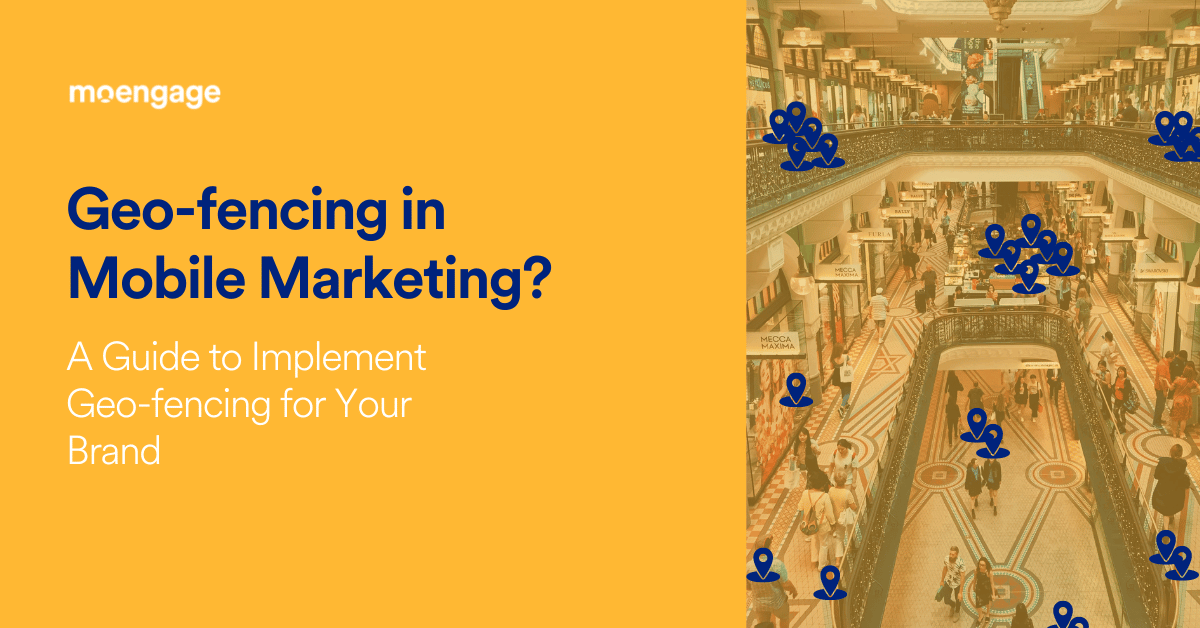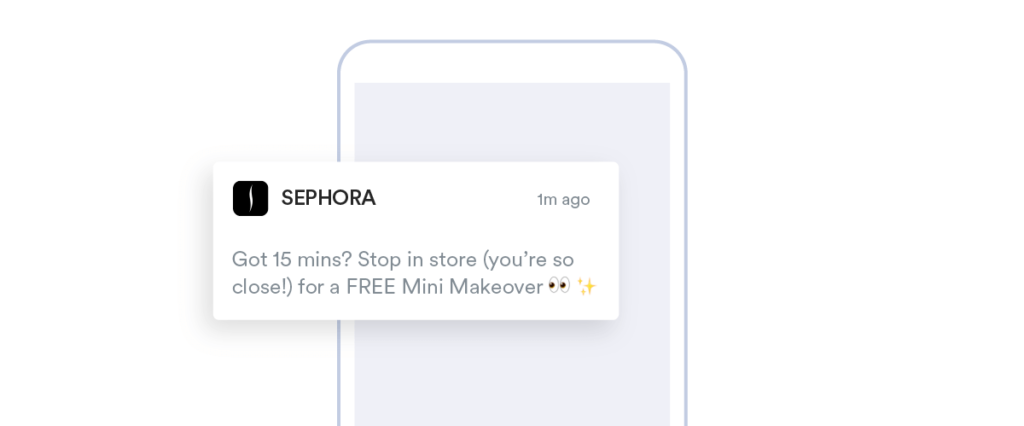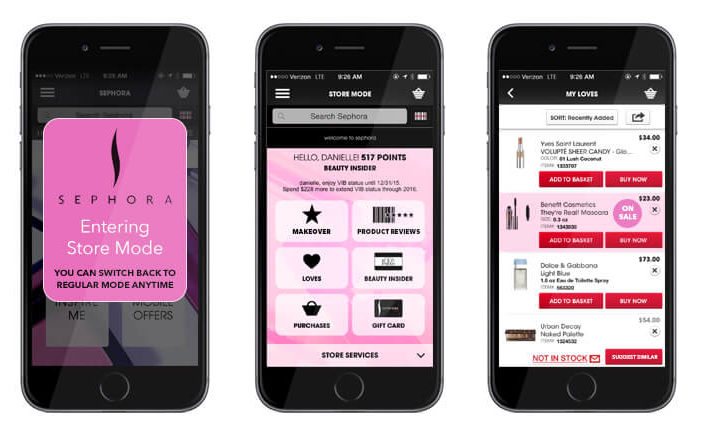Geofencing in Mobile Marketing? A 2023 Guide to Implementing Geo Fencing

Picture this: You’re driving to McDonald’s to finally get a fix of your favorite Big Mac and Frappe combo. As soon as you’re in the vicinity, your smartphone pings with an unexpected notification: Burger King is selling their flagship Whoppers at an insane one penny!
You won’t believe your eyes and open the BK app skeptically, only to discover that the offer is genuine. Now eager to bite into your dirt cheap Whopper, you forget about your Big Mac plans and place a pick-up order at Burger King.
This is how in 2018, Burger King shrewdly leveraged Geofencing to drive mobile app downloads and boost footfall in its stores.
The result?
The BK app shot to the first position in the ‘food and drink’ category in Apple’s App Store. With over half a million coupon redemptions, customers were 20x more responsive to the #WhopperDetour coupon than any other in-app discount Burger King had offered.
What is Geofencing in Mobile Marketing?
|
|
Geofencing is a location-based marketing strategy that enables you to create a virtual boundary (fence) around a specific geographic location. When customers step inside your Geofence, you’re immediately alerted and can send targeted notifications to grab their attention.
These messages can be sent via. Push notifications, in-app messages, search ads, or display ads on a website; the customer just needs to be connected to the internet.
For example, Uber uses Geofencing to drive more sales. It has set up a Geofence around airports, and as soon as you enter, the Uber app sends you a notification to prompt you to book a cab.
Geofencing: Proximity Mobile Marketing and Beyond
1. Hyperlocal targeting
In a survey, Search Engine Watch observed that most marketers had stated that hyperlocal targeting had demonstrated excellent ROI in their mobile ad campaigns. Hence, Geofencing can be relied upon for success if you aim to drive nearby customers to your brick-and-mortar space.
For example, Starbucks has placed Geofences all around its outlets. As soon as your smartphone is detected nearby, you’ll be offered your favorite beverages at a very attractive discount.
|
|
2. Personalization
Around 52% of marketers use location-based data to drive personalization, according to Factual research.
Location-specific targeting makes it easier for marketers to send across compelling marketing copy with relevant call-to-action. When you know where your customer is and why they are there, you can serve them personalized messages that will resonate with their needs in real time, raising the efficacy of your campaign.
You can also use Geofencing to personalize the in-store shopping experiences of your customers.
For example, a store companion’ gets activated as soon as you enter a Sephora store. It gives customers product recommendations based on past purchases, interests, etc. Moreover, customers can also access information on limited edition offers, wish-list product availability, and store happenings on that particular day.
|
|
3. Increase Customer Engagement and Response
If you’re willing to get creative with Geofencing, you can smartly involve customers in your Geofencing campaigns to amass a more favorable response.
In our Burger King vs. McDonald’s example, BK required customers to go near McD’s outlets to unlock the Whopper deal. Through this, they encouraged customers to join in the thrill of trolling their arch-enemy. Instead of being just bystanders watching the game, customers could actively participate in their brand war.
If we look at a different example, In 2017, Dunkin’ Donuts introduced a one-day Snapchat Geofilter on National Coffee Day, which customers could only use near a Dunkin’ outlet. Anyone who clicks a photo with the filter will receive a free medium Dark Roast Coffee.
|
|
4. Enhance Customer Experience
In 2021’s pandemic-ridden world, consumers have limited mobility, and avoiding public spaces is the new norm. Real-time location-based marketing might not be lucrative now, especially if you aim to increase store visits.
One way of implementing Geofencing is incentivizing customers to use your services by offering them a customer experience suited for today’s time.
For example, Walmart recently leveraged Geofencing to offer ease of use to its customers. It allows you to place orders online, and as soon as you’re near the store’s location, Walmart’s Geofence will detect you, and a delivery agent will bring your order to you.
|
|
5. Analytics
An LBMA research revealed that most marketers think location-based data significantly raises their ability to reach. Geofencing enables proper customer engagement analytics by giving you data based on clicks and impressions of your ad campaigns. You can observe customer response to your ads, and keep modifying your ad content, timing, targeted location, etc., to increase the success of your campaign in real-time.
Things You Should Know Before Implementing Geofencing Mobile Marketing
1. What technology to use?
Geofencing uses GPS, beaconing, Radio Frequency Identification technology, Wi-Fi, and cellular data to determine the coordinates of a person and whether that person is entering, exiting, or dwelling in your Geofence.
GPS drains a lot of battery, whereas Wi-Fi and cellular data are more battery-efficient. 62% of companies rely on Wi-Fi for location-based services, reveals LBMA.
But, when we talk about accuracy, Wi-Fi and cellular are no match for GPS, as GPS can be precise for up to 2-3 meters of the customer’s location.
Wi-Fi and cellular networks can only tell you, for example, which street your customer is in. Since you want to serve highly personalized ads to customers at the right time through a Geofencing campaign, vague location data will not be helpful in your proximity targeting efforts.
2. What is the cost of Geofencing?
Geofencing advertising usually falls under the CPM model (cost per 1000 impressions), in which you pay for the number of impressions on your ads.
The standard pricing range is $3.50-$15 CPM for mobile and desktop. When calculating your total expenses, factor in the average CTR observed in your industry. For Geofencing display tactics, the average CTR usually ranges between 0.50-1%. For this, you’ll need to pay for high impressions to achieve your desired number of clicks. If you want a good ROI, It’s prudent to go for a low-cost Geofencing service in such a scenario.
You can also go for the CPV, the cost-per-visit model, in which marketers only pay for the ads that convert into a store visit. If the primary goal of your Geofencing campaign is to drive more foot traffic to your store, then this is the ad-spend model you should procure.
The average monthly spend on Geofencing mobile marketing is estimated to be $10,000-$15000.
3 Useful Geofencing Implementation Tips
1. Be specific in your in-app notifications
You want your push notifications to inspire action instead of getting overlooked by the customer. To make your content more action-oriented, you can use- personalized offers, urgency-based CTAs, appealing freebies, etc.
For example, this Sephora notification uses persuasive language and an appealing offer to lure customers for an impromptu store visit.
 |
2. Create a small fence
Your Geofence should typically cover a 4-5 mile radius. Your ad needs to reach the customer at the right time. Ideally, your Geofencing ad will be most effective if your customer sees your store immediately before or after they see your ad. This can only work if your Geofence is concise and strategically placed for maximum conversions.
|
|
3. Respect customer privacy
Accessing your audience’s exact location should not be taken lightly. Ask your customer’s permission and educate them on how location-based targeting is also in their interests.
Embrace the Future with Geofencing
In 2016, Citibank set a precedent in the banking sector by deploying beacon technology at several ATM branches in Manhattan. It allowed customers to access ATM lobbies at odd hours with the help of their Apple Watches or iPhones. Besides the convenient cardless entry, customers also received personalized, location-based messages about events and special offers.
Geofencing mobile marketing is an example of new-age marketing and a glimpse into how marketing teams can leverage location technology to offer incredible customer journeys.
In employing it, you show your customers that you’re willing to tap into new horizons to bring more ease into their lives.
What more can one ask for?
If you want to get started with your Geofencing marketing in 3 easy steps, give us a shout-out now!
Here’s What You Can Read Next |












